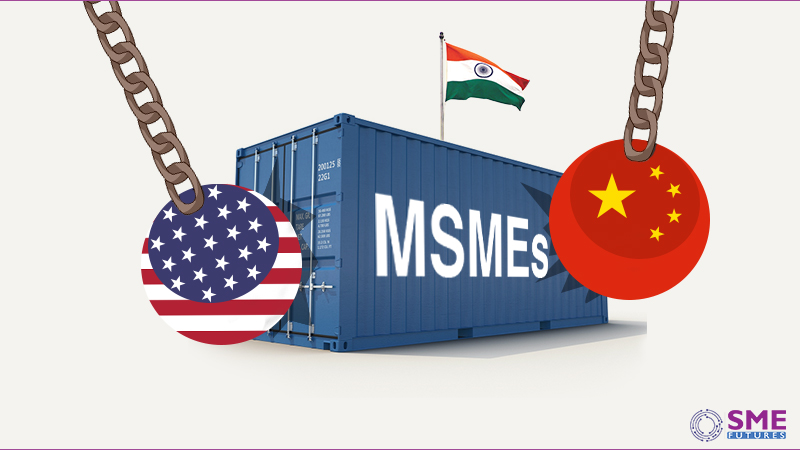Suresh Prabhu, the country’s commerce and industry minister was in Washington middle of last month. He met the whole gamut of officials related to trade, agriculture, commerce and even US Congressional members who are heading to the India caucus. The two sides promised each other that in about a fortnight their teams of officials would meet, and they would take up the issues of a negative trade deficit the USA has with India.
They were also to negotiate the issues of market access – tariff and non-tariff barriers – and would not let the trade war between Washington and Beijing touch the shores of India. Unlike the case of China where all of the US President, Donald Trump’s administration are unanimous in seemingly reversing the trend of huge trade surpluses of China year on year, in case of India their attitude seems to be one of conciliation. In fact, if Prabhu is to be believed, the bilateral trade relationship should move vertically up, and also expand horizontally.
But the prognosis for the country is not all good in this milieu of trade attrition. According to one study by the Amsterdam based co-operative sector Rabobank, India is particularly vulnerable to the Sino-US trade war. The study says that India to line up with the US in terms of punitive measures against Chinese trade, the nation along with Hong Kong, being the third largest market for Indian goods and services. The biggest market is the USA followed by the United Arab Emirates.
India exports goods and services to the extent of USD 22 billion to China. If the nation were to impose a 20 per cent tariff, there could be a severe reduction in India’s exports to China, thus shaving off a substantial 0.4 per cent of the GDP, the Rabobank study says.
On the other hand, it India were to side with China in this ‘trade war,’ and if the USA were to impose 20 per cent more tariff on Indian exports to the country, it could hit the GDP negatively to the extent of 0.9 per cent.
“In a third scenario, India retaliates the protectionist measures of the US by targeting US exports by an equal tariff of 20 per cent. In this case, the Indian economy could face total losses as large as 2.3 per cent up to 2022. The higher tariffs on US products would result in higher import prices, which prop up prices for both Indian consumers and producers (US intermediates will become more expensive as well). Higher domestic inflation leads to lower private consumption, lower investment, and an additional negative impact on export and import volumes,” the Rabobank had averred.
Gain or lose?
Overall, it appears that the Indian international trade is so marginal that it cannot intervene either way to overly gain or lose economically. But it is certainly is a swing nation-state. The way New Delhi weighs can determine the winner of the bout.
There are serious advantages for the country to side with China. A Business Standard article of 16 April edition, accounts for India’s large trade deficit with China. In 2016-17, the union commerce ministry data shows that the deficit was at $ 51 billion. India’s imports from that year was $ 61 billion and exports, $ 10 billion.
The country’s exports to China included primary and intermediate products. Topmost exports are mineral ores and cotton, plus cotton yarn. But recent changes in the comparative advantage have moved cotton and yarn imports by China to Indonesia and Vietnam. While this is not an example of an ultra-protectionist measure that qualifies the trade policy of the USA currently, and instead is an example of positives of globalization, it also reflects upon the mixed bag that are results of the ‘trade war.’
Take the case of an item that is directly on the hit list of the Chinese arsenal of putting tariff barriers as a counter-action to the US activities. Soybean is a high demand commodity of the nation. They import 60 per cent of the global production of Soybean, of which 40 per cent is from the USA. Now as a retaliatory measure, Beijing has put tariffs that could lower its import. On the other hand, if one were to consider that most of the Soybeans are consumed domestically in China, while the rest goes into making oil and meals meant for exports, the import downturn could translate into an export problem also.
This is where India can come in and can pick up the slack in the global market. On the same plane, the USA higher tariff level on steel and aluminium can India as much as it can hit India. These cause downstream problems for the units especially in the medium and small-scale sector of the economy.
Sitaram Sharma, President of Bharat Chamber of Commerce “The fallout of US-China trade war will have a direct impact on India including the MSME Sector. But will be storied and potentially deep. It will affect both trade and economy.”
He says, that since both the US and China are India’s top export destinations for engineering goods, the skirmish between the two may pose a challenge in the Indian export sector. And as large numbers of MSMEs are engaged in engineering goods they might be caught in the crossfire.
“With prices of base metal likely to go down MSMEs engaged in this sector may witness their revenues shrink. For Chin will try to muscle into the market as its own exports to the USA will be restricted,” Sharma explains.
However, he also points out, that as our economy, including MSMEs, are more domestic market oriented impact of the Sino-US trade war will be less. If India can fill the gap of Chinese supply to the USA, the MSMEs can benefit. But in this trade war, there are no clear winners.
Also read: ‘While fighting big fish, SMEs need to worry about start-up disruptions too’











